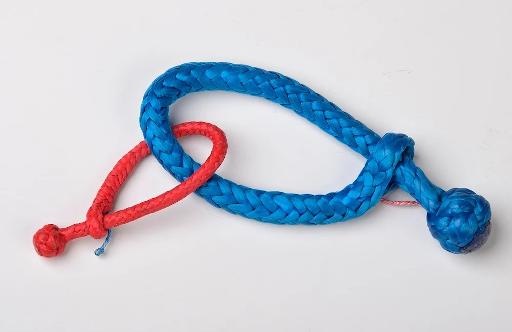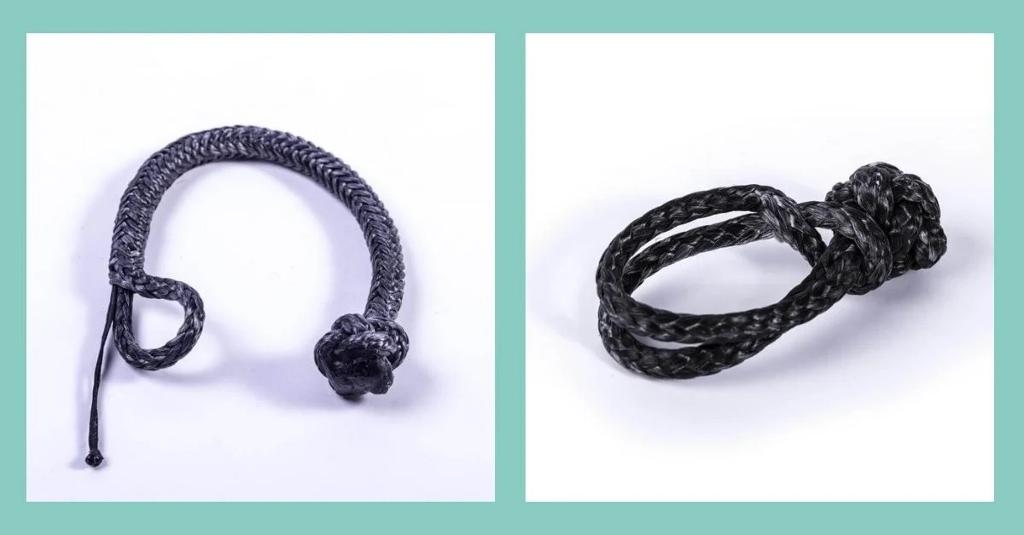Soft shackles have surely penetrated the mainstream sailing in recent years. They are a popular alternative to traditional metal shackles. Made from single braid Dyneema® soft shackles offer several advantages over their metal counterparts. Read our blog to understand the main benefits of switching to soft shackles, their applications and maintenance requirements.
Soft shackles are a fraction of the weight, stronger, safer and have a similar life span to their metal equivalents. We are big fans of soft shackles at Upfront.com! Generally made of single braid, polyurethane coated Dyneema® SK75 or SK78 with a diamond stopper knot, they can be used to replace virtually every stainless shackle on-board.
Soft shackles - variety of applications
Soft shackles offer a myriad of versatile applications in the sailing realm. Sailors can seamlessly replace snap shackles by attaching halyards to sails, ensuring a secure and efficient connection. When attaching sheets to sails, these soft shackles prove invaluable, reducing the risk of snagging and impact damage to the mast and rigging. The convenience continues as blocks can be swiftly and easily attached to toe rails or deck padeyes. A growing trend in the market showcases an increasing number of blocks designed specifically for connection using soft shackles, strops, or lashings. Furthermore, their adaptability extends to serving as sail hanks, showcasing the extensive range of possibilities for these flexible and reliable connectors in the world of sailing. Basically, they really are the soft, strong and secure universal connector!

Soft shackles - a plethora of benefits
Soft shackles boast a multitude of advantages that set them apart from their stainless equivalents. Their super lightweight design results in weight savings of 70-80%, contributing to improved overall agility and performance on the water. Offering a quick, simple, and reliable connection, these soft shackles are easy to remove and never bind, even under heavy loads. With excellent abrasion resistance and no susceptibility to corrosion, they ensure longevity and durability in various sailing conditions. The soft, pliable nature of soft shackles allows for natural articulation and self-alignment to the load angle, reducing wear and tear on the mast, rigging, deck, and sails. Additionally, their flexibility enables usage across a wide range of applications, reducing the need for additional metallic toggles. Moreover, the waterproof and floatable nature of Dyneema® eliminates concerns about dropping pins overboard, offering sailors peace of mind in challenging maritime environments.
Which soft shackle is better - single line or twin line?
There are two general styles/configurations of soft shackles: those that look like a single line with the diamond knot at one end and an eye splice at the other end (which can be opened to slip over the knot); or where the eye splice is formed by passing the line through itself which leaves the body of the shackle as x2 individual lines.

Single and Double soft shackles from LOOP Products
They are both made from exactly the same material, with the same strength properties, they are just different construction techniques. Which type to use mainly comes down to personal preference, however, at Upffront.com we would recommend the twin line version for two reasons:
- We believe the double soft shackles are a little easier to open andclose.
- Blocks tend to sit more comfortably on the two lines as they can move around to take the load more evenly.
Soft shackles - maintenance and replacement
Being waterproof and corrosion resistant there is very little that needs to be done to maintain soft shackles. Assuming the bearing surfaces are smooth you should see relatively little abrasion of the fibre. As with all rigging elements, the life of the soft shackle is primarily dependent on the normal working load as a percentage of its designed break load. For example, a shackle working at 25% of its break load will last twice as long as a shackle working at 50% of its break load.
Soft shackles should be inspected as part of your routine maintenance and annually removed for a full visual inspection. If any fluffing of the fibre is evident, it should be replaced and, as a precaution, we would recommend general replacement after 3-5 years depending on use.
If you haven’t made the switch to soft shackles on your boat, you should really consider it. It is quick and simple to change and can be a relatively inexpensive upgrade which offers many performance and ease-of-use advantages.
If you have any questions about soft shackles, please feel free to email us at [email protected], or click the link below to see our full range:
SOFT SHACKLES

Soft shackles are a win-win solution for multiple applications